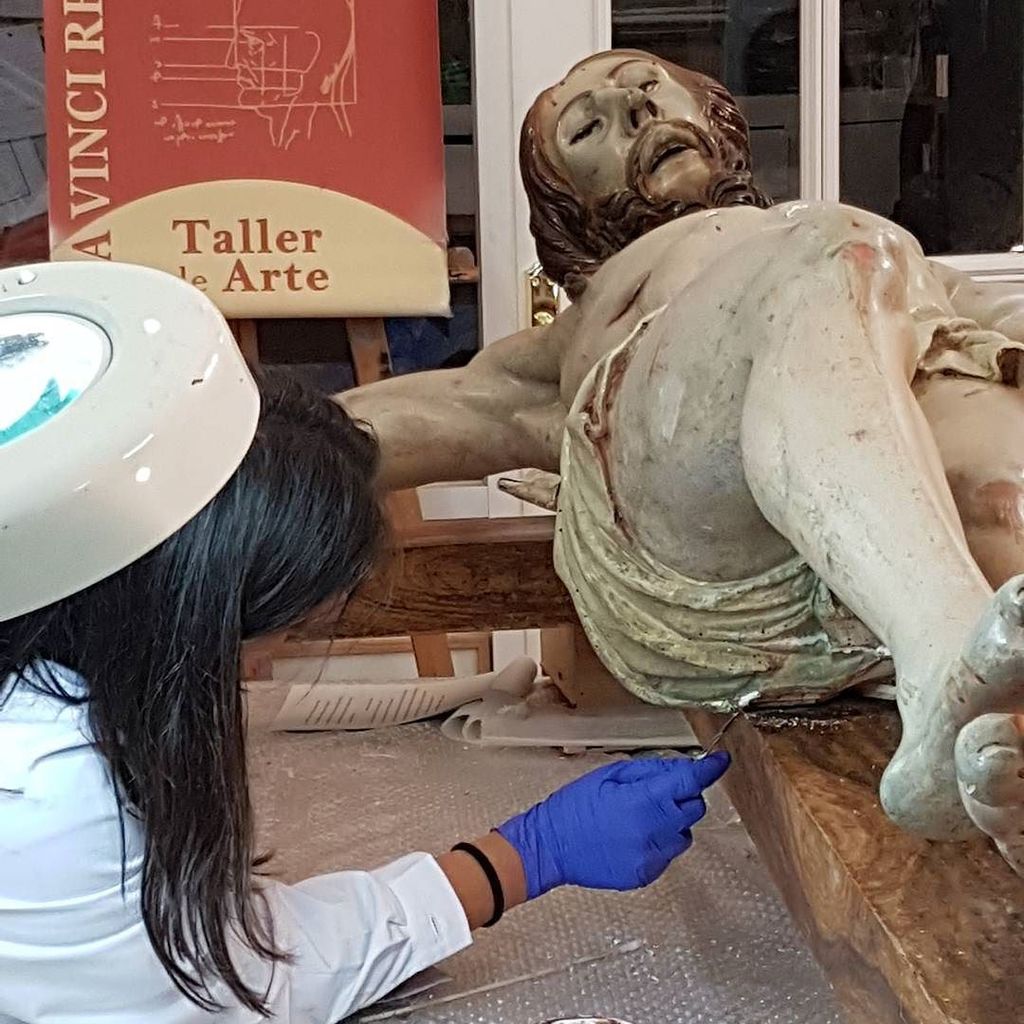
An 18th-century wooden statue of Jesus harbored a surprise —time capsule letters hidden in the buttocks, researchers reported.
The work of art, called "Cristo del Miserere," is a wooden statue that adorned the Church of Santa Águeda in Sotillo de la Ribera, Spain. It was damaged a few years ago and conservators at the Madrid-based Da Vinci Restauro were fixing the Jesus statue, which had been cracked open in the buttocks area, said Gemma Ramirez, one of the restorers who made the discovery. Such wooden statues were typically made hollow, both because they were lighter that way, and because they contracted less, leading to less cracking, Ramirez said.
As Ramirez and another art restorer were moving the cracked-open statue, the colleague noticed a surprise hiding inside.
She shouted, "There's something inside!"Ramirez recalled.
Her colleague was stunned speechless, and so Ramirez initially thought her colleague was referring to insects that often feed on decaying wood, she told Live Science. But the duo carefully put blocks under the statue — which is about as big as a man — to support its weight, and peered inside.
They saw two tiny, handwritten scrolls. They carefully took pictures before extracting them, she said.
It turned out the scrolls, which were written on sheepskin with a purple-brown ink, were penned by a man named Joaquin Minguez, who was the prior of the church in 1777. The statue itself was made by a man named Manuel Bal, according to the letters.
The letters describe life at the time, from the earthquakes experienced to the resources that supported people, including wheat fields, vineyards, and deer and wolves people hunted, Ramirez said. The prior also describes people falling ill with fevers that typically last three or four days. The monks spent their time playing cards and ball games, the letter continued.
The portrait of daily life in the 1700s was clearly meant to be a kind of time capsule that was eventually found, because the handwriting is exquisite, Ramirez said.
"He wanted to leave a memory of their experience in their epoch," Ramirez told Live Science in an email.
After examining the letter, the team created a pH-neutral re-creation of the letter, which means it was neither acidic or basic and so wouldn't damage the sculpture. They then reinserted it, along with their own letter describing modern times, Ramirez said.
"Maybe future generations will find it," Ramirez said.
Source: Live Science
No comments:
Post a Comment